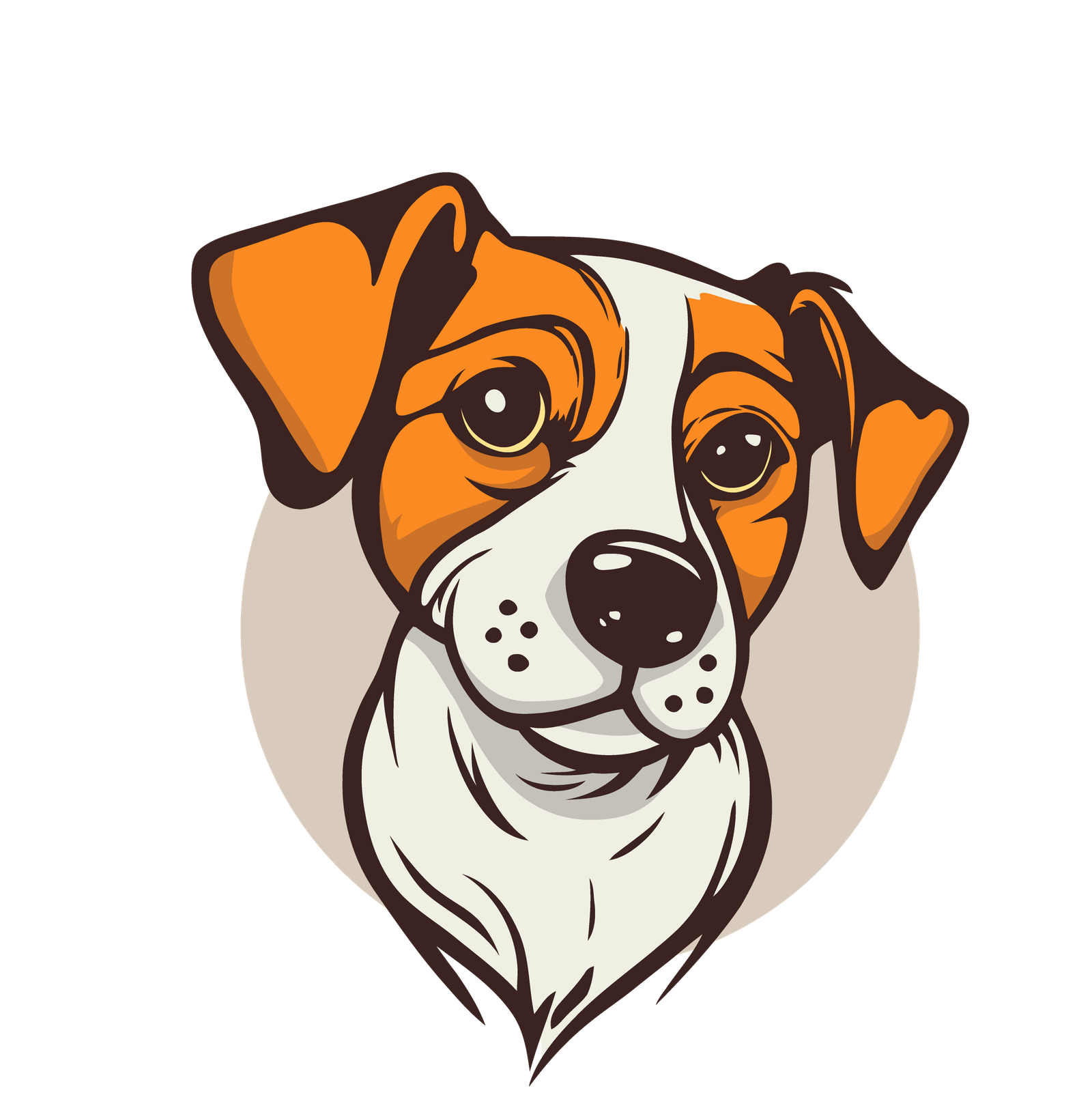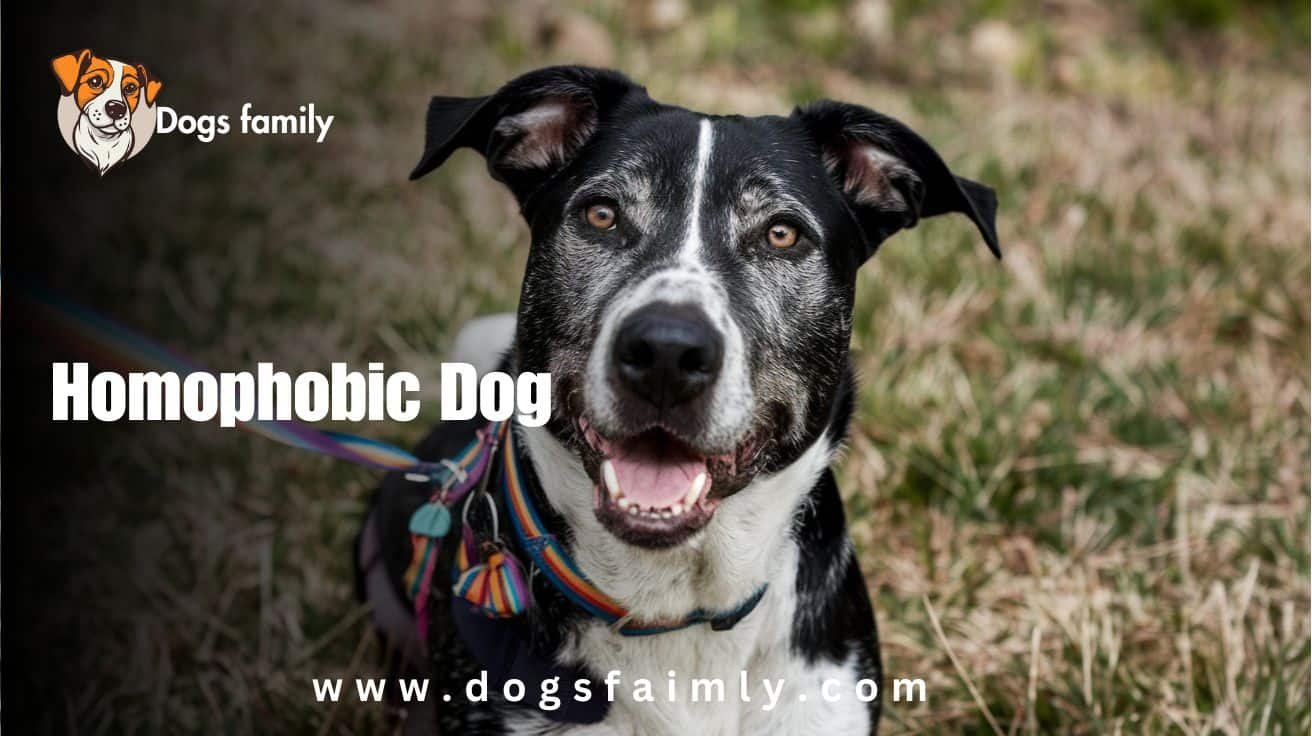When you think of a dog’s behavior, you probably imagine them wagging their tails, playing fetch, or curling up on the couch. However, you may have heard of a peculiar concept making its rounds in the pet community—homophobic dogs. But what does it mean for a dog to be “homophobic,” and is there any truth to this idea? In this article, we will examine the behavior of dogs, understand why some may act a certain way toward people of the same gender, and debunk or validate the notion of a homophobic dog.
What Is a Homophobic Dog?
Before diving deeper into the subject, let’s clarify what a homophobic dog means. In simple terms, this refers to a dog that seems to have a negative or aggressive reaction to people who exhibit behaviors that are associated with same-sex attraction. This could be a dog acting aggressively toward a same-sex individual or showing discomfort when around same-sex interactions.
Now, you might be wondering—do dogs have the cognitive ability to understand human sexuality? The short answer is no. Dogs do not have the intellectual capacity to comprehend the complex nuances of human sexuality. So, why do certain dogs act in a way that might appear ‘homophobic’? Let’s explore this in more detail. Meanwhile, if you’re curious about the most popular dog breeds in the UK, you’ll find a variety of breeds with unique traits, some of which might show unusual behaviors that are often misunderstood.
Understanding Canine Behavior
To understand why some dogs act this way, it’s crucial to understand canine behavior in general. Dogs, like humans, are social animals. They are highly sensitive to their environment, including the actions and emotions of the people around them. Dogs are known to pick up on social cues, body language, and even vocal tones. Their behavior can be influenced by a variety of factors, including their previous experiences, socialization, breed, and genetics.
When it comes to same-sex interactions, a dog might display behaviors based on its past experiences, which can shape how it perceives both same and opposite-sex individuals. Dogs, especially those labeled as ‘scary dogs‘ due to fearful or aggressive responses, often act this way due to anxiety, territorial instincts, or past negative experiences. These reactions, sometimes observed as ‘What the Heckin Dog‘ moments, highlight the complexity of a dog’s behavior, which is often a response to stress rather than any intentional understanding of sexuality.
Factors Contributing to the “Homophobic” Behavior in Dogs
- Territorial Instincts: One of the most common reasons for aggressive behavior in dogs is territoriality. Dogs, especially certain breeds, can be protective of their owners and their environment. If a dog perceives another individual—regardless of gender—as a threat to its territory, it might respond aggressively or defensively. In this case, the behavior is not related to the person’s sexuality but rather the dog’s instinct to defend its space.
- Lack of Socialization: Socialization plays a vital role in a dog’s behavior. A Homophobic Dog that hasn’t been exposed to a wide variety of people and situations may react negatively when faced with new experiences. For instance, if a dog has not been accustomed to seeing or interacting with same-sex individuals, it might react out of confusion or fear. Early exposure to diverse situations can help prevent this type of behavior.
- Fear or Anxiety: Homophobic Dogs that have experienced trauma or have underlying fears might show aggression or discomfort when in certain social situations. This can manifest as aggressive behavior or avoidance when interacting with specific people. Fear-based reactions are often misinterpreted as hostility or “homophobia,” but they are more likely a response to stress or anxiety.
- Breed-Specific Traits: Some dog breeds are naturally more territorial or protective. Breeds like the German Shepherd, Doberman Pinscher, and Rottweiler are known for their protective instincts, which could lead to aggressive behavior if they perceive a threat. While this behavior is not necessarily linked to the sexual orientation of the person, it could appear as if the Homophobic Dog has a bias based on its territorial nature.
- Overreaction to Body Language: Dogs are highly attuned to body language. If a person’s body language or behavior is perceived as unusual or threatening, a Homophobic dog might react accordingly. Same-sex interactions, such as hugging or holding hands, might appear as unusual behavior to a dog that is not used to these actions. This could provoke a response simply based on the dog’s interpretation of unfamiliar movements.
What Can You Do If Your Dog Displays Homophobic Behavior?
If you suspect that your dog is displaying aggressive or uncomfortable behavior toward individuals of the same sex, don’t panic. There are steps you can take to help your dog overcome these reactions and improve its behavior.
Step 1: Evaluate Your Dog’s History
Start by considering your Homophobic dog’s past experiences. Has it been exposed to negative situations involving same-sex individuals? Dogs that have been mistreated or poorly socialized may develop fear or aggression toward people who resemble those negative experiences. If your Homophobic dog has had a traumatic past, it might be responding out of fear, not prejudice.
Step 2: Improve Socialization
One of the most effective ways to change your dog’s behavior is through positive socialization. Gradually expose your dog to different people, both male and female, in a controlled and safe environment. The more positive interactions your dog has with diverse individuals, the more likely it is to accept new people without fear or aggression.
Step 3: Training and Positive Reinforcement
Training your dog using positive reinforcement is another effective strategy. Reward your dog with treats and praise when it behaves calmly around individuals it previously reacted negatively toward. Training should focus on desensitizing the dog to same-sex interactions and encouraging a positive response. Consistent training over time can help change your dog’s behavior.
Step 4: Consult a Professional
If your dog’s behavior continues to be problematic despite your efforts, it might be time to consult a professional dog trainer or animal behaviorist. These experts can help assess your dog’s behavior and develop a tailored plan to address the issue. In some cases, underlying anxiety or fear may require specialized treatment.
Is the Idea of a Homophobic Dog Just a Myth?
One of the most common reasons for aggressive behavior in dogs, especially within a dog’s family, is territoriality. Dogs can be protective of their owners and environment, and if a dog perceives another individual—regardless of gender—as a threat to its territory, it might respond aggressively or defensively. In this case, the behavior is not related to the person’s sexuality but rather the dog’s instinct to defend its space.
Anecdote: The Case of Max, the Aggressive Terrier
I once had a terrier named Max, who would bark loudly and show signs of aggression whenever a male friend would visit. At first, I wondered if Max didn’t like men, but after consulting a professional dog trainer, I discovered that Max’s behavior stemmed from a lack of socialization as a puppy. Max had not been exposed to a variety of people, and his initial fear of unfamiliar male figures manifested as aggression.
Through consistent training and positive reinforcement, Max eventually learned to feel comfortable around men, showing no signs of aggression after a few months. This experience confirmed for me that a dog’s behavior is shaped by its environment, experiences, and training, rather than any understanding of human sexuality.
Conclusion
In conclusion, the idea of a homophobic dog is largely misunderstood. Homophobic Dogs react to people based on their experiences, instincts, and socialization, not their sexual orientation. If your dog is displaying aggressive behavior toward individuals of the same sex, it’s more likely due to fear, territoriality, or a lack of exposure. With the right training, socialization, and positive reinforcement, you can help your dog overcome these reactions and foster a more well-rounded, confident pet.
FAQs
Can a dog's behavior really be linked to homophobia?
No, dogs don't have the intellectual capacity to understand human sexuality. Any aggressive or fearful behavior towards same-sex individuals is usually due to factors like territoriality, fear, or lack of proper socialization, rather than any real understanding of sexual orientation.
How can I address my dog's aggressive behavior toward same-sex individuals?
Start by evaluating your dog's history and past experiences. Gradually expose them to new people through positive socialization, reinforcing calm behavior with treats and praise. If needed, consult a professional dog trainer to help modify your dog's behavior.
Is there a specific dog breed that is more likely to show "homophobic" behavior?
Some breeds, especially those with strong territorial instincts like German Shepherds, Doberman Pinschers, and Rottweilers, may react aggressively to unfamiliar individuals. However, this behavior is due to territoriality, not an understanding of human sexuality.
Final Words
While the term “homophobic dog” might be catchy, it’s important to remember that dogs, like humans, are shaped by their experiences. If your dog exhibits behavior that seems to be discriminatory, it’s an opportunity to improve their socialization and training, leading to a more relaxed and well-adjusted companion. Always approach any behavioral concerns with patience and the understanding that dogs react based on their environment, not their ability to judge human emotions or behaviors.

